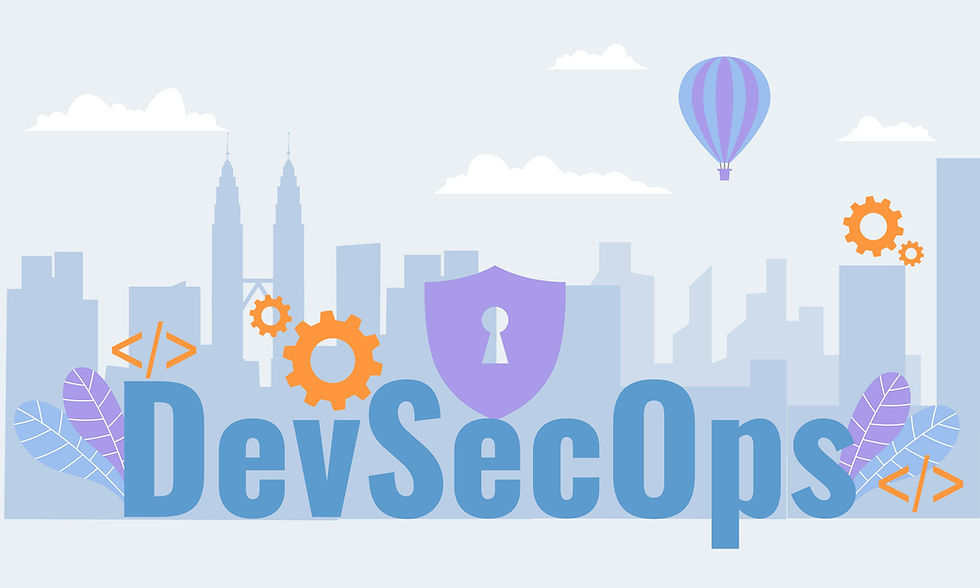Strengthening Software Delivery with DevSecOps
- contact754672
- Jul 24
- 2 min read

As organizations race to release applications faster, security can’t be an afterthought. That's where DevSecOps comes in — seamlessly integrating security into every phase of the DevOps lifecycle. In this blog, we break down DevSecOps concepts covered in the curriculum to help you understand what learners gain and how this approach reshapes modern software delivery.
1. Introduction to DevSecOps
DevSecOps, short for Development, Security, and Operations, is about embedding security at every stage of the DevOps pipeline. Rather than relying solely on post-deployment testing, DevSecOps integrates automated security checks into code builds, testing, and deployments.
Key Curriculum Highlights:
Why traditional security fails in CI/CD environments
Shift-left security mindset
Benefits of early threat detection
2. Threat Modeling and Risk Assessment
An important early step in secure development is threat modeling — the process of identifying potential security threats before coding begins.
What you’ll learn:
Understanding attack surfaces in modern applications
Risk-based prioritization of threats
Mapping controls to known vulnerabilities (like OWASP Top 10)
3. Security in CI/CD Pipelines
Security needs to be part of continuous integration and deployment workflows. This section focuses on tools and practices that enforce secure builds and automated testing.
Key Practices Covered:
Static Application Security Testing (SAST)
Dynamic Application Security Testing (DAST)
Secrets management and scanning tools (e.g., GitGuardian, TruffleHog)
Pipeline hardening techniques
4. Container Security and Image Scanning
Containers are central to modern DevOps practices, but they bring unique security challenges. This module ensures learners understand how to secure containerized environments.
Core Topics Include:
Vulnerability scanning in container images (using tools like Clair or Trivy)
Best practices for Dockerfile and container runtime security
Kubernetes security basics and role-based access control (RBAC)
5. Security as Code and Policy Enforcement
Security as Code is the automation of security controls using code, enabling enforcement and validation through pipelines.
Covered Tools and Concepts:
Infrastructure as Code (IaC) scanning using tools like Checkov or tfsec
Policy-as-Code with Open Policy Agent (OPA)
Enforcing compliance at deployment stages
6. Monitoring and Incident Response
Even with preventive security, real-time detection and response are essential. This part of the curriculum focuses on how teams monitor for threats and respond to breaches.
Students Will Explore:
Logging and centralized monitoring using ELK/EFK stacks
Integrating security alerts into DevOps workflows
Basics of incident response plans in cloud-native environments
Conclusion: Secure by Design, Deliver with Confidence
DevSecOps is not just a buzzword — it’s a crucial discipline for building software that’s both fast and secure. The curriculum equips learners with practical knowledge and hands-on skills to integrate security into every stage of development and deployment. Whether you're a developer, operations engineer, or security analyst, understanding DevSecOps gives you a competitive edge in today’s cloud-native world.
Want to build secure software without slowing down your pipeline? Enroll to Qbend DevOps Mastery program — and become the DevOps professional companies’ need.




Comments